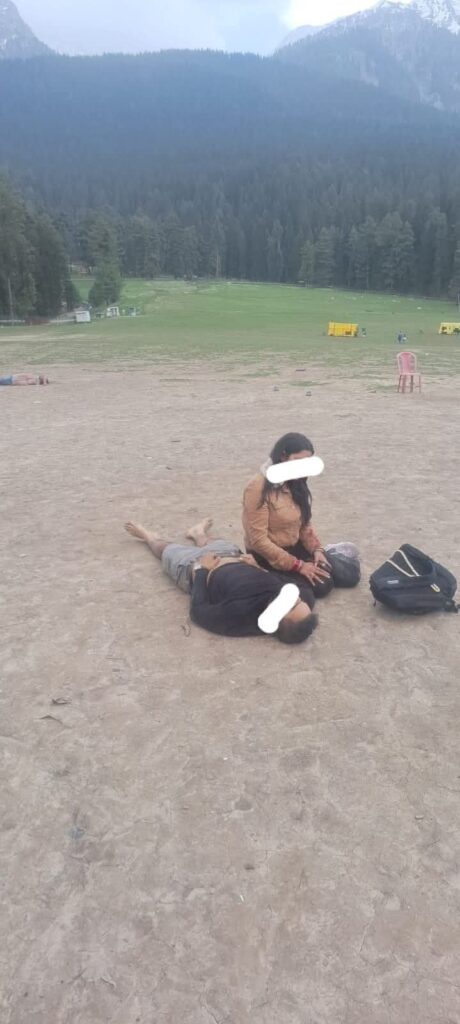On April 22, 2025, the serene Baisaran meadow near Pahalgam in Jammu and Kashmir, India, known as “mini-Switzerland” for its picturesque beauty, became the site of a horrific terrorist attack.
This incident, one of the deadliest in the region since the 2019 Pulwama bombing, shattered the peace of a popular tourist destination, targeting civilians and leaving a trail of grief and outrage. The attack, claimed by The Resistance Front (TRF), an offshoot of the Pakistan-based Lashkar-e-Taiba, sparked global condemnation and prompted swift responses from Indian authorities.
This summary outlines ten key points to provide a clear and comprehensive understanding of what transpired, drawing from multiple sources while critically examining the event’s details and implications.

Key Points
1. Nature and Location of the Attack:
The attack occurred around 2:50 PM on April 22, 2025, in the Baisaran meadow, a remote tourist spot in the Anantnag district, accessible only by foot or pony. Four to six militants, reportedly from The Resistance Front (TRF), emerged from dense forests and opened fire on a group of tourists gathered in the valley, many posing for photographs in traditional Kashmiri attire.
The meadow, surrounded by pine-covered ridges, was bustling with 1,000 to 1,500 visitors, slightly fewer than usual. The attack’s timing and location suggest a planned assault to maximize civilian casualties in a high-visibility tourist area.
2. Casualty Figures and Victims:
At least 26 to 28 people were killed, with estimates varying slightly across sources, and over 20 others were injured, some critically. The victims included mostly Indian tourists from states like Gujarat, Maharashtra, Karnataka, Uttar Pradesh, and Odisha, as well as two foreign nationals from the UAE and Nepal.
Notable casualties included Lieutenant Vinay Narwal, a 26-year-old Indian Navy officer on leave, recently married on April 16, and Prashant Satpathy, a 43-year-old tourist from Odisha. The high death toll and diverse victim profiles underscore the attack’s indiscriminate nature.
3. Perpetrators and Motive:
The Resistance Front (TRF), a militant group linked to Lashkar-e-Taiba, claimed responsibility. Intelligence agencies identified Saifullah Kasuri (alias Khalid), a top Lashkar-e-Taiba commander, and two Pakistan-based operatives as masterminds.
The attack was reportedly aimed at resisting alleged demographic changes in the Kashmir Valley, a narrative often used by militant groups opposing Indian rule.
Some sources suggest Pakistan’s involvement, citing the attack’s scale and timing as a sign of desperation amid improving security in Jammu and Kashmir. However, Pakistan’s Defence Minister Khawaja Asif denied any role.
4. Targeting of Specific Groups:
Survivor accounts indicate the attackers selectively targeted Hindu men, sparing women and children. Some reports claim terrorists checked victims’ identities, with one survivor alleging they shot a man after confirming his Hindu identity by inspecting his ID and clothing.
This selective targeting, if accurate, suggests a communal motive, though such claims require further verification due to their sensitive nature.
The attack’s execution, with point-blank shootings, heightened its brutality and psychological impact.

5. Immediate Response and Rescue Efforts:
Security forces, including the Indian Army, Rashtriya Rifles, CRPF, and Jammu and Kashmir Police, launched a joint search operation in Pahalgam’s dense forests, using advanced technologies like foliage-penetrating radar to locate the attackers.
The injured were rushed to hospitals in Anantnag and Srinagar, with medical teams mobilized swiftly. Local guides, such as Waheed, assisted in evacuating the wounded on horseback due to the terrain’s inaccessibility.
The response highlighted logistical challenges but also rapid mobilization.
6. Government and Political Reactions:
Prime Minister Narendra Modi cut short his Saudi Arabia visit, returning to Delhi on April 23 to hold a high-level meeting with National Security Advisor Ajit Doval and External Affairs Minister S. Jaishankar.
Union Home Minister Amit Shah visited Srinagar, paid tributes to victims, and reviewed security arrangements.
Jammu and Kashmir Chief Minister Omar Abdullah called the attack an “abomination,” emphasizing its unprecedented scale against civilians.
Opposition leader Rahul Gandhi and Congress chief Mallikarjun Kharge demanded justice and support for victims’ families.
7. International Condemnation:
World leaders condemned the attack, with U.S. President Donald Trump pledging support, Russian President Vladimir Putin calling it a “brutal crime,” and UN Secretary-General Antonio Guterres stressing that attacks on civilians are unacceptable.
Leaders from Saudi Arabia, Germany, Australia, and Nepal also expressed solidarity. U.S. Vice President JD Vance, visiting India during the attack, extended condolences.
The global outcry underscored the attack’s violation of international norms against targeting civilians
8. Impact on Tourism and Local Economy:
The attack triggered widespread cancellations of hotel and flight bookings to Jammu and Kashmir, with travel agents reporting a surge in inquiries.
Airlines like Air India and IndiGo operated additional flights from Srinagar to Delhi and Mumbai on April 23, waiving cancellation and rescheduling fees until April 30.
The incident, occurring ahead of the Amarnath Yatra pilgrimage, raised concerns about tourism safety, potentially reversing recent gains in visitor numbers following improved security
9. Public and Regional Response:
A complete shutdown (bandh) was observed in Jammu and Kashmir on April 23, supported by political parties like the National Conference and Peoples Democratic Party, as well as organizations like the Jammu Chamber of Commerce and Vishva Hindu Parishad.
Protests erupted in Jammu, Reasi, Kathua, and Samba, with locals burning tires and suspending schools and traffic. Candlelight marches in Sopore, Ganderbal, and Bandipora reflected public grief and anger, signaling widespread condemnation of the attack.

10. Security and Policy Implications:
The attack exposed vulnerabilities in tourist-heavy areas despite claims of reduced terrorism post-Article 370 revocation. Union Home Minister Amit Shah’s earlier statements in March 2025 noted a 70% drop in terror-related deaths since 2014, but this incident challenged narratives of normalcy.
It prompted calls for enhanced counter-terrorism measures, including advanced surveillance and intelligence. The National Investigation Agency (NIA) joined the probe, and a major offensive was launched against militants.
The attack’s timing, coinciding with U.S. Vice President JD Vance’s visit and Modi’s Saudi trip, suggested a strategic intent to embarrasing India
**Summary**
The Pahalgam attack on April 22, 2025, was a meticulously planned act of terrorism that killed at least 26 to 28 people, mostly tourists, in the Baisaran meadow, executed by TRF militants linked to Lashkar-e-Taiba.
The selective targeting of Hindu men, high casualty toll, and attack on a tourist hub marked it as one of the deadliest civilian strikes in Jammu and Kashmir’s recent history.
Swift security responses, international condemnation, and political actions followed, but the incident raised serious questions about tourism safety and counter-terrorism efficacy.
Public outrage, expressed through shutdowns and protests, underscored the attack’s profound impact on the region. As investigations continue, the attack serves as a grim reminder of persistent security challenges in Jammu and Kashmir, necessitating robust measures to prevent future tragedies and restore confidence in the region’s stability.
